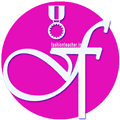Smock-frock
 A smock-frock or smock is an outer garment traditionally worn by rural workers, especially shepherds and waggoners, in parts of England and Wales from the early eighteenth century. Today, the word smock refers to a loose overgarment worn to protect one's clothing, for instance by a painter.
A smock-frock or smock is an outer garment traditionally worn by rural workers, especially shepherds and waggoners, in parts of England and Wales from the early eighteenth century. Today, the word smock refers to a loose overgarment worn to protect one's clothing, for instance by a painter.
The traditional smock-frock is made of heavy linen or wool and varies from thigh-length to mid-calf length. Characteristic features of the smock-frock are fullness across the back, breast, and sleeves folded into "tubes" (narrow unpressed pleats) held in place and decorated by smocking, a type of surface embroidery in a honeycomb pattern across the pleats that controls the fullness while allowing a degree of stretch.
Types of smock-frocks
- The round smock is a pullover style with an open neckline and a flat, round collar. This smock is reversible front-to-back.
- The shirt smock or Surrey smock is styled like a man's shirt, with a collar and a short placket opening in the front. It is not reversible.
- The coat smock worn by Welsh shepherds is long and buttons up the front in the manner of a coat
Development
It is uncertain whether smock-frocks are "frocks made like smocks" or "smocks made like frocks"—that is, whether the garment evolved from the smock, the shirt or underdress of the medieval period, or from the frock, an overgarment of equally ancient origin. What is certain is that the fully developed smock-frock resembles a melding of the two older garments.
 From the earlier eighteenth century, the smock-frock was worn by waggoners and carters; by the end of that century, it had become the common outer garment of agricultural labourers of all sorts throughout the Midlands and Southern England. The spread of the smock-frock matches a general decrease in agricultural wages and living standards in these areas in the second half of the eighteenth century. The smocks were cheaper than other forms of outer garments, and were both durable and washable.
From the earlier eighteenth century, the smock-frock was worn by waggoners and carters; by the end of that century, it had become the common outer garment of agricultural labourers of all sorts throughout the Midlands and Southern England. The spread of the smock-frock matches a general decrease in agricultural wages and living standards in these areas in the second half of the eighteenth century. The smocks were cheaper than other forms of outer garments, and were both durable and washable.
Embroidery styles for smock-frocks varied by region, and a number of motifs became traditional for various occupations: wheel-shapes for carters and wagoners, sheep and crooks for shepherds, and so on. Most of this embroidery was done in heavy linen thread, often in the same color as the smock.
By the mid-nineteenth century, wearing of traditional smock-frocks by country laborers was dying out, although Gertrude Jekyll noticed them in Sussex during her youth, and smocks were still worn by some people in rural Buckinghamshire into the 1920s. As the authentic tradition was fading away, a romantic nostalgia for England's rural past, as epitomized by the illustrations of Kate Greenaway, led to a fashion for women's and children's dresses and blouses loosely styled after smock-frocks. These garments are generally of very fine linen or cotton and feature delicate smocking embroidery done in cotton floss in contrasting colors; smocked garments with pastel-colored embroidery remain popular for babies.


EmoticonEmoticon